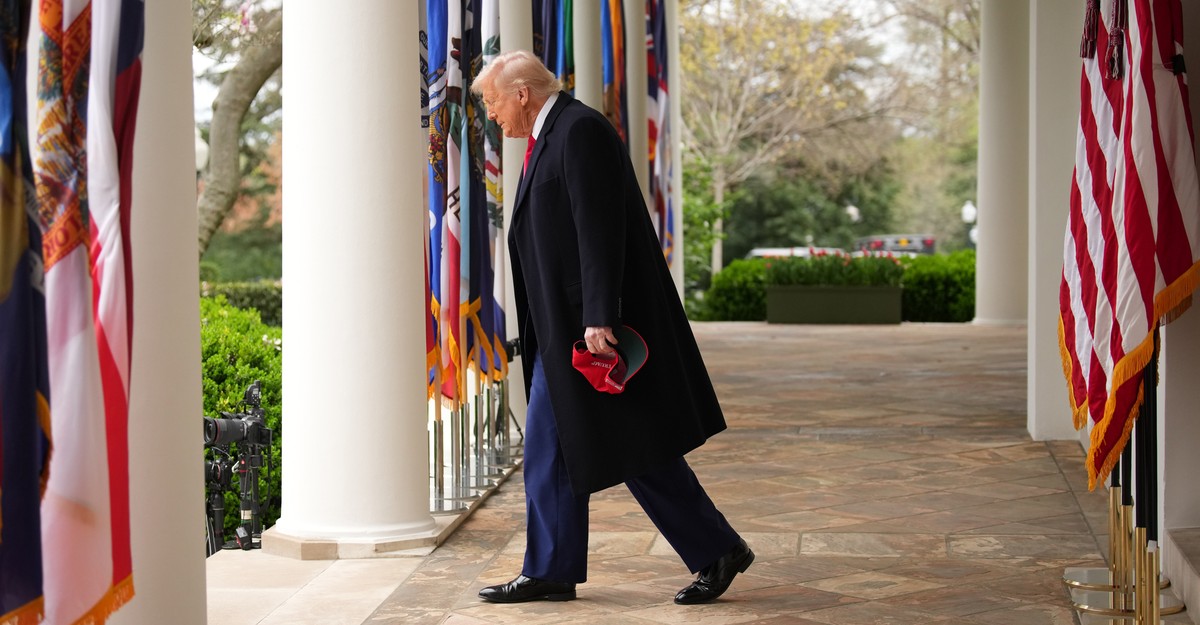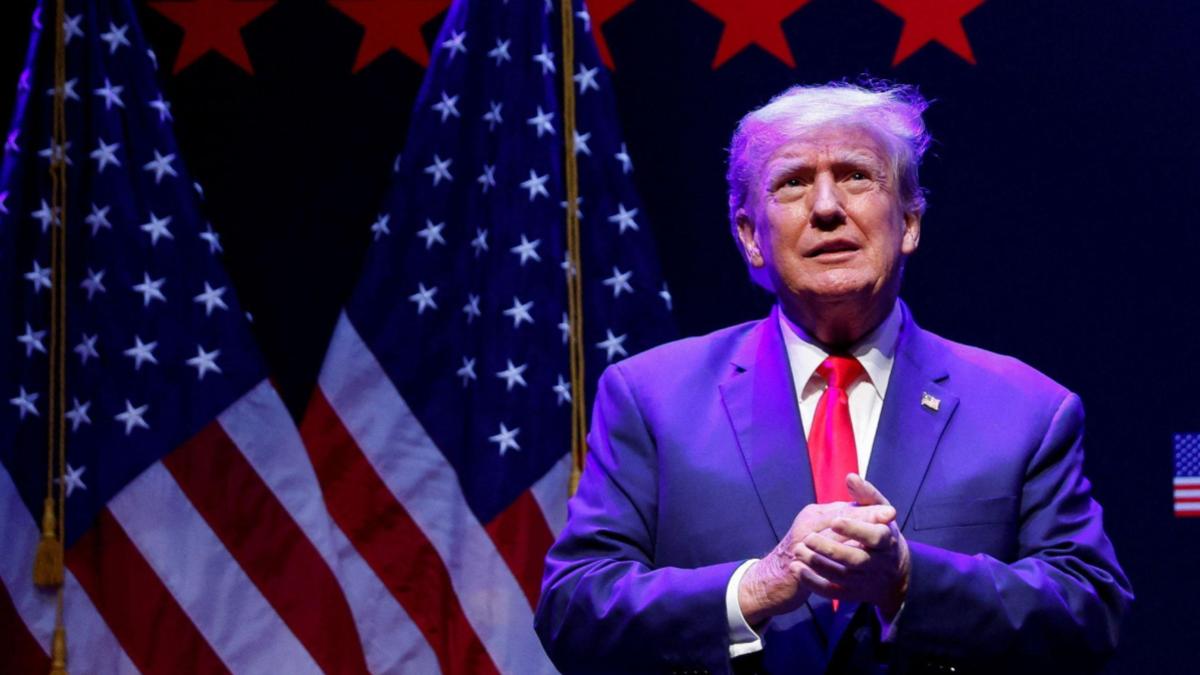This is an edition of The Atlantic Daily, a newsletter that guides you through the biggest stories of the day, helps you discover new ideas, and recommends the best in culture. Sign up for it here.
For the past few days, investors, foreign leaders, and members of Congress have gradually gotten more and more frantic about the Trump administration’s huge tariffs. The White House, meanwhile, projected equanimity. “They feel like everything is going according to plan,” an adviser told Politico.
And then, suddenly, the plan— if there ever was one—changed. This afternoon, President Donald Trump announced a partial pivot on social media. On the one hand, he ratcheted up tariffs on China to 125 percent. On the other hand, he announced that he was reducing tariffs on “more than 75” other countries to 10 percent for the next 90 days. In an odd wrinkle, this appears to also mean new tariffs on Canada and Mexico, which will now be subject to a 10 percent rate, having been previously exempted from this round of tariffs—though they are still subject to a 25 percent tariff imposed earlier.
Are you confused yet? Imagine being an importer or a manufacturer.
The simplest way to read this is that Trump has blinked. I’ve written previously that Trump, despite his obsession with strength, almost always folds. He’s actually not much of a negotiator at all, and can be induced to back down pretty easily. Bill Ackman, the activist investor and Democrat turned Trump cheerleader, has spent the past few days freaking out on X about “a self-induced, economic nuclear winter.” Today, trying to save some dignity for himself and perhaps for the president, he posted, “This was brilliantly executed by @realDonaldTrump. Textbook, Art of the Deal.”
This assumes that Trump has gotten something in return. If that is true, no one seems to know what it is, and Trump is not usually shy about proclaiming his achievements. He said last night that foreign leaders “are dying to make a deal. ‘Please, please, sir, make a deal, I’ll do anything, I’ll do anything sir.’” But no new agreements have been announced yet, and Europe was on the verge of retaliation. Trump hasn’t totally given up his leverage—the 90-day pause allows him to bring the tariffs back later—but it removes a great deal of urgency for foreign negotiators.
A better answer is that Trump is responding to domestic concerns. Markets were heading toward bear territory, major financial institutions were warning about recessions, and a Treasury bond sell-off may have spooked the White House. As the president put it this afternoon, “People were jumping a little bit out of line; they were getting yippy.” Markets responded just as Trump must have hoped, rising sharply after the news.
Yet just calling this a fold is simplistic. Trump has moved to a stance of trade war that is belligerent in comparison with everything except his position as of this morning. He continues to ratchet up tariffs with China. This tit for tat could still produce immense jumps in prices, especially for tech products, as my colleague Damon Beres explained yesterday. Trump has added new tariffs on Canada and Mexico, two other important trade partners, and maintained the lower, but still significant, tariffs on everyone else.
Even more to the point, Trump is committing himself even more strongly to unpredictability. If tariffs can be firmly on in the morning and then paused in the afternoon, with no clear explanation or prologue, they can be back on again soon. This is certainly the story of Trump’s interactions with Mexico and Canada so far. Tariffs are crushing for small businesses; for large businesses, they’re frustrating but not fatal. The greater problem for the big companies is instability. An executive can’t make a solid plan if they don’t know what sort of regime they’ll be dealing with in two months or six months.
This is the catch-22 of treating tariffs as a negotiating tool. Trump wants corporations to build new factories in the United States, but they need predictability to do that. It can take years to put a new factory into operation. How many times will Trump change his mind over that period? Yet unpredictability is what Trump views as the source of his leverage. If he promises stability to companies, he’s giving other governments the same assurance that he won’t switch things up.
Wall Street is delighted now—markets soared at the end of the day. The exuberance is based on the idea that Trump blinked. They’re not exactly wrong, but he hasn’t given any indication that his underlying theory of trade has changed. When the party buzz wears off, businesses will be facing the same volatile future they were this morning.


